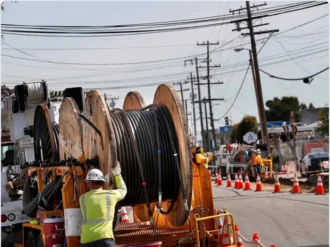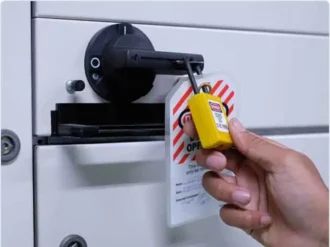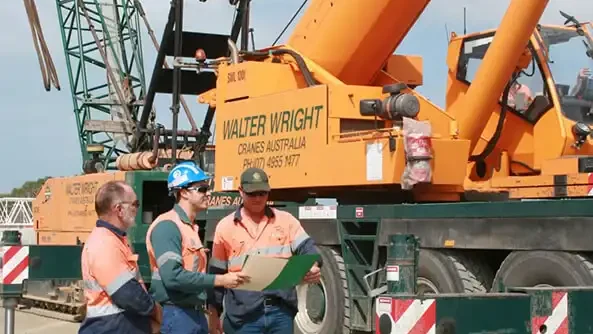Introduction
Lifting and carrying heavy materials in industries such as construction and manufacturing is done almost entirely with the help of cranes, yet these vehicles can become as dangerous as they are useful if handled poorly. Operators who are not rigorously prepared to work with cranes represent a risk to themselves and all other employees on site, which is why safety training is of paramount importance.
Potential Hazards
The most common risks associated with operating cranes are:
Being Struck by Falling Loads.
Cranes are commonly used to lift and move very heavy objects and materials, which means that if loads are ever dropped, they can cause significant property damage, as well as grave injuries amongst workers. There are a number of different reasons why cranes might fail in this manner, although the majority of the latter also imply some form of human error. For example, any materials that are not secured correctly can fall and land on nearby employees, which, in some cases, may even prove to be fatal. Mechanical failure is another factor that could lead to materials falling, but such failures are almost entirely avoidable if crane operators perform regular inspections and maintenance of the vehicles.Overloading.
Some operators tend to use their intuition in order to assess whether or not they are overloading a crane. Given enough time, the vehicle becomes increasingly worn due to repeated overloading, which, in the best-case scenario, leads to it breaking down. In the worst-case scenario, operators are unaware of the damaged equipment until the latter malfunctions and a grave accident occurs. For this reason, it is essential that workers use precise measurements to assess the weight of materials and avoid overloading a crane.Working with Faulty Equipment.
A malfunctioning crane can buckle or collapse, as well as drop heavy materials or inflict electrical injuries on operators and/or nearby personnel. To avoid such accidents, operators must be familiar with the basic components of a crane and learn to inspect the latter prior to using the vehicle for any task. Any potential malfunctions must be reported and addressed straight away.Electrocution.
When working under energized power lines, crane operators run the risk of touching the power line with the boom, hoist line or other part of the crane. If and when this occurs, any person in direct contact with the vehicle can be electrocuted and gravely injured. Hundreds of deaths and approximately three times more injuries due do contact between a crane and an overhead powerline are reported each year. What’s worse, these accidents put both the operator and any nearby personnel at risk. Even workers who are very close to the crane, but are not touching the latter can suffer electrocution.
Incident Prevention
Safety training, close supervision, regular inspections, and a correct use of personal protective equipment are all important aspects of incident prevention during crane operations. To begin with, no employee should be allowed to operate, load, or unload a crane unless they have received rigorous training to do so. Doing otherwise does not only increase the risk of accidents, but is also a direct violation of OHS legislation.
In addition, crane operation areas should be isolated and properly signaled out so that ground employees can stay clear of the danger of falling materials and objects. Each task that involves the use of a crane should be allowed ample time for completion in order to avoid a rushed procedure. Operators need enough time to inspect the equipment, as well as to correctly secure and lift/move the loads.
Finally, a complete safety plan must be devised prior to all crane operations. This should include a thorough risk assessment, together with recommendations that workers must follow to prevent accidents and maintain their safety.
Recommended Safety Courses



What You Can Do to Stay Safe
If you are routinely asked to operate a crane at work, then the first step you must take to ensure your safety and that of your colleagues is to undergo rigorous training. In Canada, your employer is mandated by law to ensure that you and your co-workers have access to the necessary safety courses before you are tasked to work with or around a crane.
A number of different jobs might require you to operate a crane as part of various projects. These include:
- Driller or drilling engineer in the Oil & Gas industry.
- Logger or production worker in the Logging & Forestry industry.
- Miner or driller in the Mining industry.
- Warehouse associate in the Logistics industry.
- Construction laborer in the Construction industry.
- Production worker or assembler in the Automotive and Manufacturing industry.

